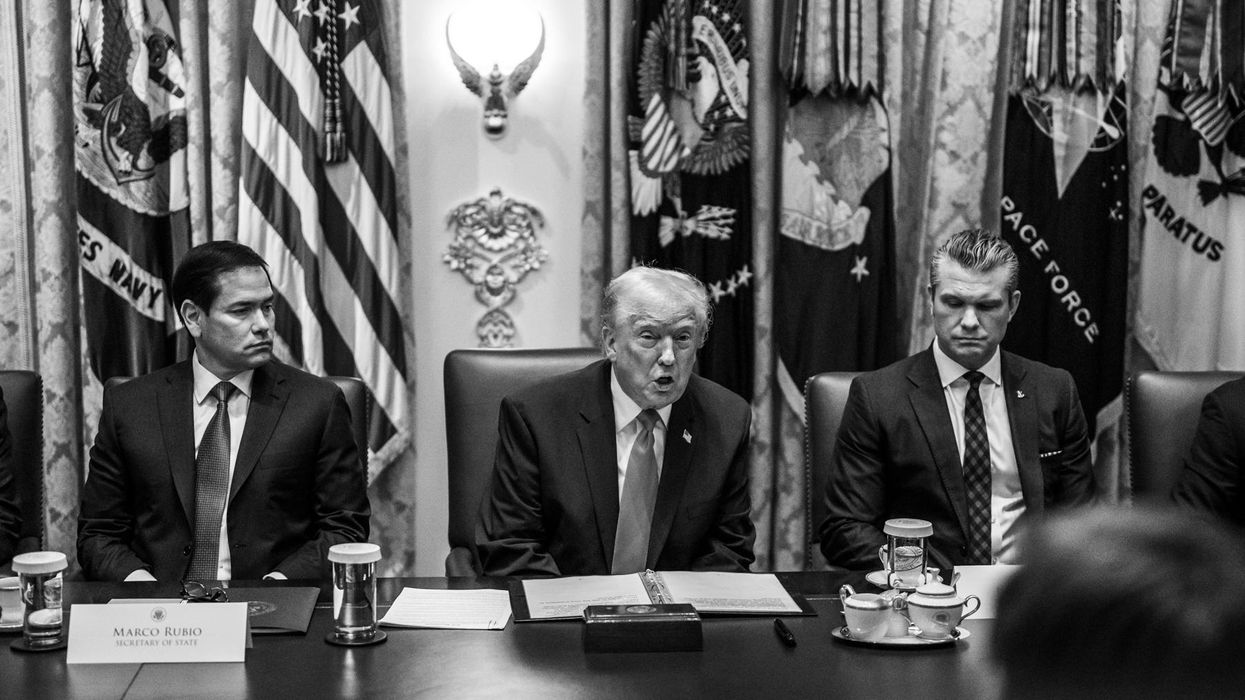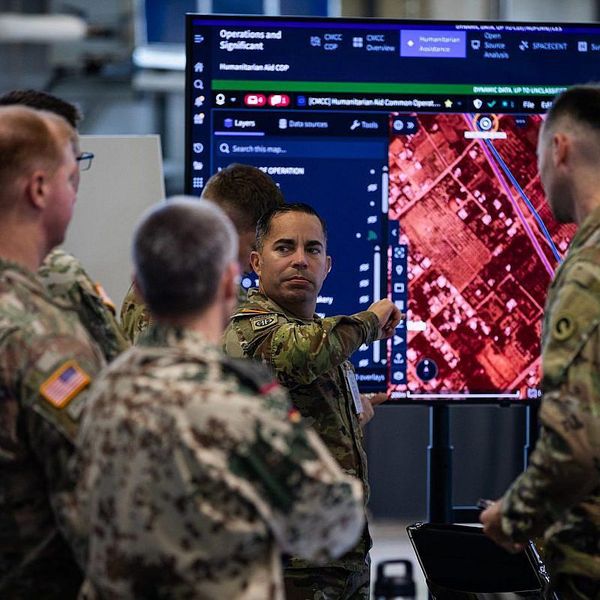For several years now, the U.S. military has been preparing to expand its presence in the Arctic.
On August 3, members of the Senate showed their own interest in a larger military presence in the region with the introduction of the Arctic Commitment Act. Introduced by Sens. Lisa Murkowski (R-Alaska) and Angus King (I-Maine), the legislation proposes “a persistent, year-round presence of the Navy and the Coast Guard in the Arctic region.”
The legislation also focuses on U.S. competition with Russia in the region. Section 7 of the act requests a report on “eliminating the Russian monopoly on Arctic shipping.” Indeed, the U.S. military has been anticipating competition over shipping in the Arctic, with new trade routes becoming available as the region warms faster than the rest of the globe.
The Navy’s Strategic Blueprint for a Blue Arctic released in January last year explains, “Competing views of how to control increasingly accessible marine resources and sea routes, unintended military accidents and conflict, and spill-over of major power competition in the Arctic all have the potential to threaten U.S. interests and prosperity.”
Also, on Friday, Secretary of State Antony Blinken announced there will be a new ambassador at-large for the Arctic region. “As one of eight Arctic nations, the United States has long been committed to protecting our national security and economic interests in the region, combating climate change, fostering sustainable development and investment, and promoting cooperation with Arctic States, Allies, and partners. ” State Department spokesman Vedant Patel said in a statement.
Experts warn that at a time when tensions between the United States and Russia are escalating and the threat from climate change increases, a military build-up in the Arctic comes with new geopolitical and environmental risks.
Gabriella Gricius, a PhD. a student and political scientist who follows the Arctic, tells me that a U.S. build-up envisioned in the senate bill could fuel military competition with Russia.
“There are certainly real consequences for the U.S.’s greater military presence in the Arctic,” Gricius said. “It may very well be treated as a military provocation by Russia and may result in increased Russian military exercises.”
Dr. Neta Crawford, co-director of Brown University’s Costs of War Project, sees the military’s view towards competition and build-up in the Arctic as a poor use of resources.
“We have a certain catastrophe on its way,” Crawford said in an interview. “It’s not a possible war. It’s a certain catastrophe, and the resources that we put to mitigating the risks by reducing emissions and also by adaptation are much better spent, I think, in terms of saving lives and livelihoods.”
In the past the Arctic Council oversaw cooperation of various countries and Indigenous nations navigating the geopolitics and climate risks in the Arctic. Following Russia’s invasion of Ukraine, the council suspended its activities.
Gricius says that a lack of cooperation in the region is unsustainable.
“The Russian Arctic makes up around 50 percent of the entire Arctic, meaning that it’s not truly possible for Russia to be shut out of the Arctic in any real way,” Gricius said. “U.S. policy then, I would think, is influenced by that fact: Russia cannot be removed from the Arctic and will continue to be a key stakeholder in the region.”
Militarism’s Impact on Climate
Along with risking greater conflict between the United States and Russia, a U.S. military build-up in the Arctic threatens to exacerbate climate change. Though the Department of Defense and various branches of the U.S. military have recently released “climate adaptation” plans, the content focuses primarily on adapting operations, rather than accounting for and reducing emissions.
In fact, the U.S. Navy published a climate adaptation plan in May this year that was scrutinized for mostly omitting any mention of its ships and planes, the two main sources of the U.S. military’s pollution. However, much of the impact of military emissions remains unknown because of a loophole in the Paris Climate Agreement which exempts governments from reporting their military’s emissions.
Despite the lack of available information, Dr. Crawford used what data is public to calculate U.S. military emissions for the Costs of War Project. According to her research on military emissions published in 2019, “the DOD is the world’s largest institutional user of petroleum and correspondingly, the single largest institutional producer of greenhouse gasses (GHG) in the world.”
She explained that roughly 30 percent of the military’s emissions come from “installation emissions,” meaning the energy use of military bases and other installations. The other 70 percent comes from “operational emissions,” or the energy use of all training, missions, transport, and other activities.
“To boil it down, anything that involves transportation is an emitter of serious significance,” Crawford said. With this context, increased military activities in the Arctic are likely to result in increased emissions if activities are not reduced elsewhere.
Crawford elaborated that aircraft in particular contribute to the 70 percent of operational emissions. This is notable given that the U.S. Air Force reportedly has the largest presence of any military branch in the Arctic.
While the Arctic Commitment Act primarily focuses on military build-up and trade competition with Russia, Gricius and Crawford see a need for different priorities.
“Despite the media frenzy about militarization and conflict in the Arctic, climate change is the largest and most pervasive threat to the region,” Gricius said. She suggests that rather than being used to escalate conflict, climate change should be used as an opportunity for cooperation.
“The U.S., in particular, should and can play an important role both in supporting local initiatives in Alaska on climate change and also bringing together cooperative initiatives between scientists, diplomats, and other actors in the region,” Gricius said.
Crawford laid out a worst-case scenario.
“Let’s say there’s an accident or an incident that escalates,” she said. “That’s hardly helpful and may be disastrous, ultimately, if it escalates to significant use of force. But it’s also the case that when we do that, the other guys increase their emissions. … Climate change is a much more urgent, and ultimately existential threat compared to these short-term concerns about showing the flag.”
















